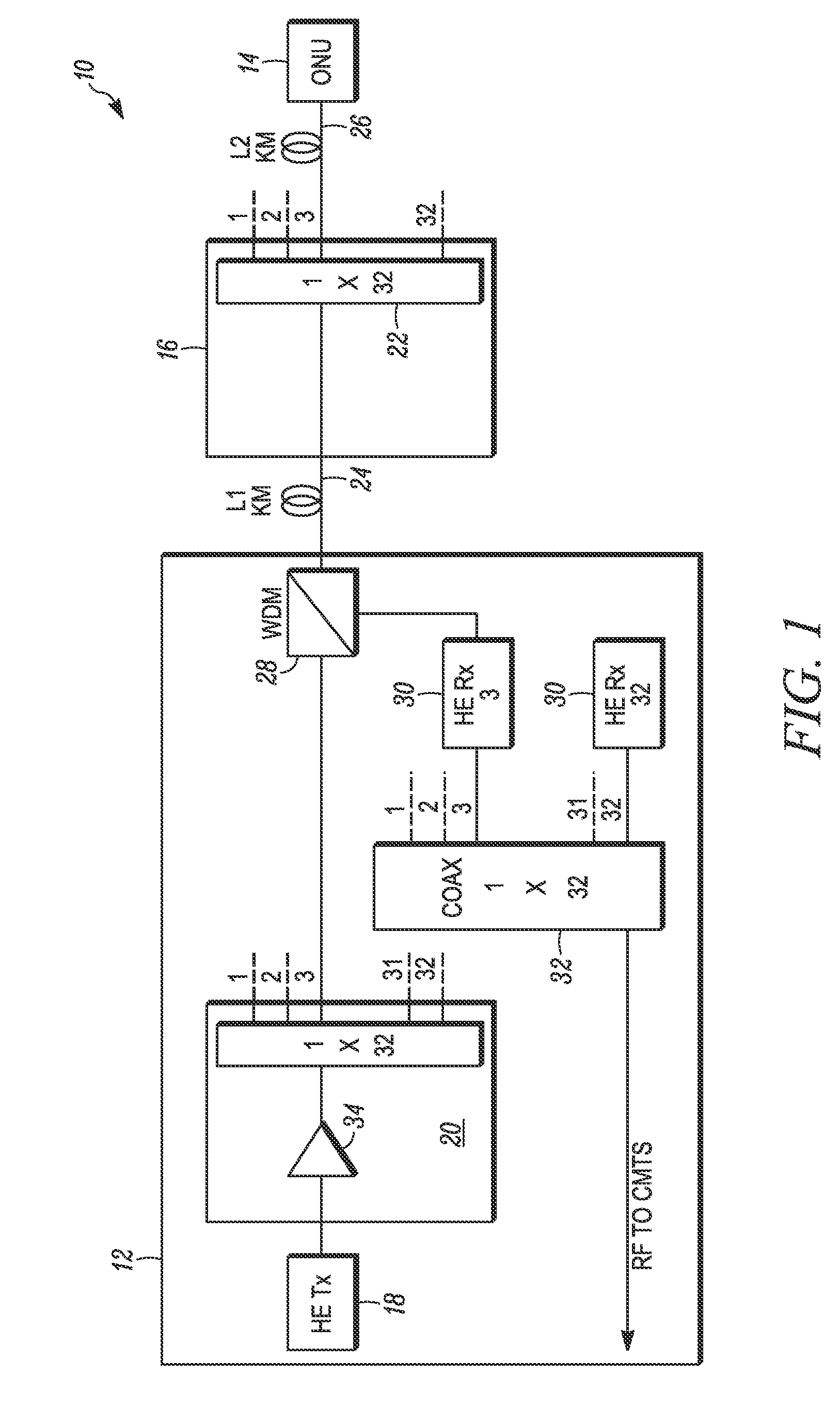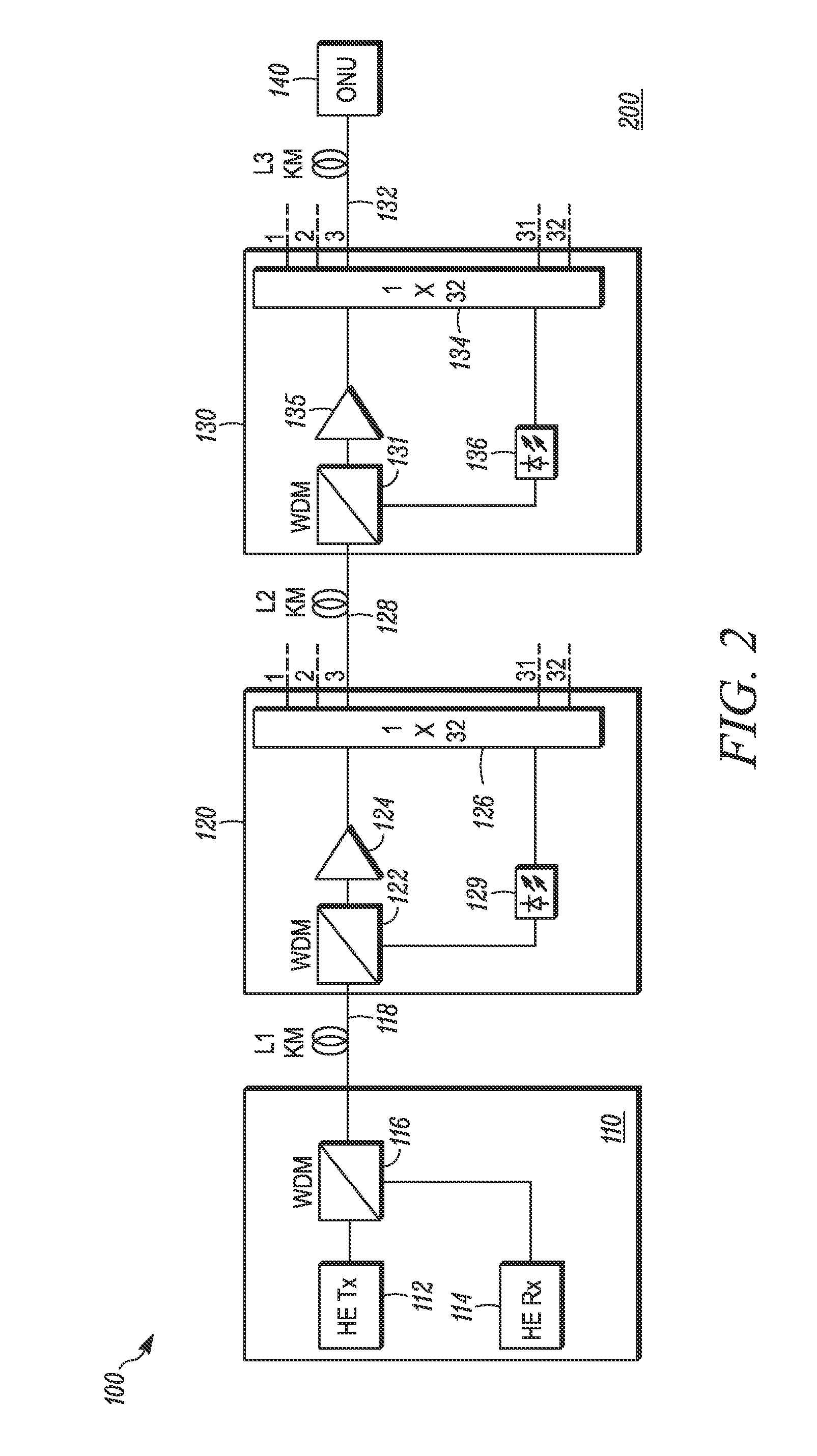Optical combiner energy harvesting
- Summary
- Abstract
- Description
- Claims
- Application Information
AI Technical Summary
Benefits of technology
Problems solved by technology
Method used
Image
Examples
Embodiment Construction
[0015]Configuring optical network unit (ONU)s to receive signals at different wavelengths may facilitate the prevention or elimination of OBI. Disclosed herein are techniques for adjusting a wavelength at an ONU by providing information to the ONU to perform the adjustment. The disclosed techniques may include the ONU identifying the port of a splitter to which the ONU is connected in order to make wavelength adjustments. Various techniques are described herein to enable the ONU to identify from which port the ONU is receiving signals. For example, as described in more detail below, a splitter that splits signals to ONUs in a cable network may signal to one or more ONUs the port to which it is connected. The splitter may perform the signal function by harvesting optical power from optical power provided to the splitter. In this manner, an active splitter may behave passively or in a passive mode with respect to the receipt of power, not requiring remote power, such as remote electri...
PUM
 Login to view more
Login to view more Abstract
Description
Claims
Application Information
 Login to view more
Login to view more - R&D Engineer
- R&D Manager
- IP Professional
- Industry Leading Data Capabilities
- Powerful AI technology
- Patent DNA Extraction
Browse by: Latest US Patents, China's latest patents, Technical Efficacy Thesaurus, Application Domain, Technology Topic.
© 2024 PatSnap. All rights reserved.Legal|Privacy policy|Modern Slavery Act Transparency Statement|Sitemap



